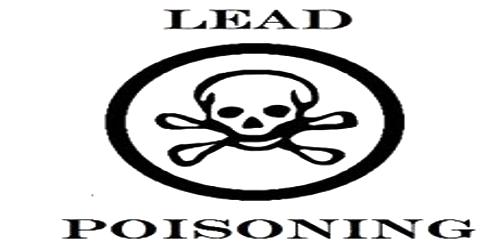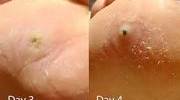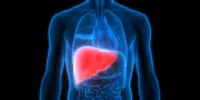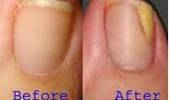Lead poisoning
Lead is a very strong poison. When a person swallows a lead object or inhales lead dust, some of the poison can stay in the body and cause serious health problems.
Lead is a naturally occurring metal. It is used in industry and, in the past, was added to petrol and household paints. Lead is a hazard when small particles are taken into the body by swallowing or breathing. Lead is a bluish-white lustrous metal. It is very soft, highly malleable, ductile, and a relatively poor conductor of electricity. It is very resistant to corrosion but tarnishes upon exposure to air. Lead isotopes are the end products of each of the three series of naturally occurring radioactive elements.
Lead is much more harmful to children than adults because it can affect children’s developing nerves and brains. The younger the child, the more harmful lead can be. Unborn children are the most vulnerable. Children get lead in their bodies when they put lead objects in their mouths, especially if they swallow the lead object. They can even get lead poison on their fingers from touching a dusty or peeling lead object, and then putting their fingers in their mouths or eating food afterward. Tiny amounts of lead can also be inhaled.
- Lead is a naturally occurring metal that may be found in the home environment.
- Lead exposure can impair intellectual development and, if levels are high enough, damage the brain.
- Children under five years of age are at greater risk.

Common sources of lead around the home include:
- Lead lighting materials
- Lead sinkers used for fishing
Common sources for ingestion are
- Food and Beverage
- Lipstick/make-up
- Lip treatments
- Facial hair
Symptoms
The symptoms of lead poisoning depend on the degree and length of exposure but may include:
- Loss of appetite
- Irritability
- Fatigue
- Abdominal pains
- Nausea
- Vomiting
- Muscular weakness
- Seizures
- Reduced IQ
- Slowed body growth
- Hearing problems
- Behavior or attention problems
- Failure at school
- Kidney damage
- Irritability
- Aggressive behavior
- Low appetite and energy
- Difficulty sleeping
- Headaches
- Reduced sensations
- Loss of previous developmental skills (in young children)
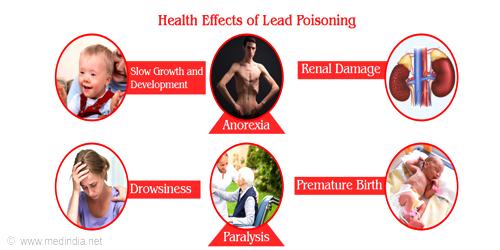
Causes of lead poisoning
Residential and environmental exposure
Repairing a lead-painted home can release dangerous amounts of lead. Environmental exposure mainly occurs through lead dust inhaling, drinking water supplied through leaded pipes and consuming food processed, preserved, or stored in containers made with lead.
Occupational exposure
The major source of lead is occupational exposure from jobs dealing with lead and lead-based components, resulting in high prevalence of lead toxicity in the population exposed to such activities. Occupational exposure to workers is seen in industries such as lead battery, cable, rubber and plastic, soldering, and foundry work such as casting, forging, and grinding activities. Construction workers involved in painting or paint stripping, plumbing, welding and cutting are also exposed to lead.
Lead in food and food containers
Some clay cookware and dishes may contain high levels of lead that are introduced during the glazing process or form decoration with lead-containing pigments.
Accidental ingestion or inhalation of lead compounds
Fishing sinkers are often made of lead. Mowed et al report a case of an 8-year-old child with lead poisoning after the ingestion of a lead-containing fishing sinker.
Imported vinyl plastic miniblinds manufactured before 1996 were made with lead. The lead becomes a hazardous dust on the surface of the blinds. Children would touch the blinds with their hands, which they then put in their mouths.
Treatment
The first step should be the removal from the exposure.
Chelation therapy is being used for anyone showing severe symptoms, which is usually associated with BLL’s above 100 μg/dl. The therapy works by reducing lead in blood and soft tissues. Since the treatment is somewhat controversial it should only be done in consultation with an experienced physician.
The primary treatment for mild lead poisoning is to stop the exposure. Removal of the source of lead is critical to reducing blood lead levels.
If you can’t remove the source of lead from the environment, you may have alternatives to reduce the likelihood that lead will cause problems. For instance, sometimes it might be preferable to seal in, rather than remove, old lead paint. Your local health department can recommend resources to identify and reduce lead in your home or in your community.
For Classes I through III, ceasing exposure to lead may be sufficient to reduce lead in your body. Children in this case may need to be retested a month after being removed from the source of the lead.
Prevention:
Following these suggestions can reduce lead exposure:
- Clean the house regularly and ensure there is no build-up of dust. Wet dust floors, ledges, window sills and other flat surfaces.
- Discourage your toddler from playing in or eating dirt and from putting dirty fingers or toys in their mouth. Wash toys and dummies frequently. Wash children’s hands and faces before they eat or nap.
- Wash fruit and vegetables before eating.
- Wash family pets frequently.
- Ensure your child’s diet is adequate in calcium and iron and avoid high fat diets because they encourage lead absorption. Also, ensure young children have regular and frequent meals, as more lead is absorbed on an empty stomach.
- Ensure that children do not have access to peeling paint or chewable surfaces painted with lead-based paint, such as old cots and window sills.
- Old toys may contain lead-based paint. If you are unsure, take the safe option and do not give them to children to play with.
Information Source:
